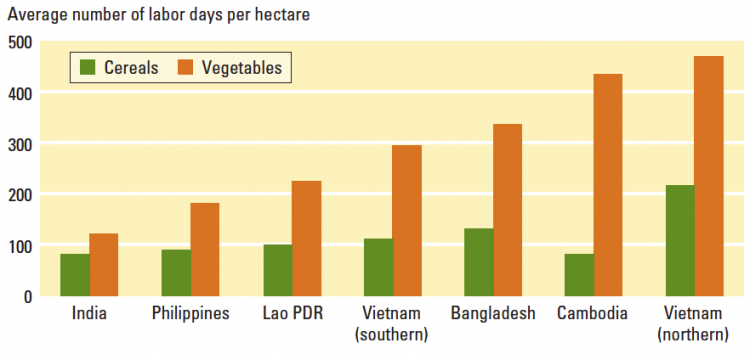Until 2000, agriculture was the mainstay of employment around the world. Since then, the services sector has assumed this mantle and the gap between the two has widened. Although employment growth in agriculture has slowed, the number of workers in this sector reached over one billion, representing 1 in 3 of all workers.
The agricultural sector has some special characteristics that make it more difficult, compared to other sectors, to know precisely how many people it employs. Firstly, in many countries agriculture is still dominated by family farms, where family members provide labour input at different times of the year. Secondly, many farmers and farm workers pursue agriculture as a part-time activity and have other more or less important sources of income. Thirdly, agriculture is characterized by seasonal labour peaks, where large numbers of workers may be hired for relatively short periods.
With 1.3 billion people employed in the sector, agriculture is the second greatest source of employment worldwide after services and it accounts 28% of global employment.
As countries develop, the share of the population working in agriculture is declining. While more than 2/3 of the population in poor countries work in agriculture, less than 5% of the population does in rich countries. It is predominantly the huge productivity increase that makes this reduction in labor possible.
According to the data from 2009, total share of employed in poor countries:
- in sub-Saharan Africa recorded 50% of all employment growth
- in South Asia recorded nearly 33% of all employment growth
- in contrast, in East Asia, Latin America and the Caribbean regions agricultural employment is falling
Agriculture is the most important sector of female employment in many countries, especially in Africa and Asia. At the global level, women do share of 38%, while men about 33%.
In global, labor requirements are considerably higher for vegetables than for cereals, as shown in the graph below.
Migration, especially by young people, poor working conditions in the sector and the growing demand for agricultural products are some of the factors that call for the adaptation and modernisation of agriculture, especially in African countries with an agrarian-based economy.
To improve the situation, farm workers and small farmers need to earn more for the work they perform, and better working conditions. The agricultural sector has great potential to provide an essential contribution to both employment numbers and work quality.
A sustainably growing agricultural sector can generate decisive impetus and make significant contributions to the fight against poverty. Employment in agriculture and in sectors directly connected to agriculture plays a crucial role in achieving this.





